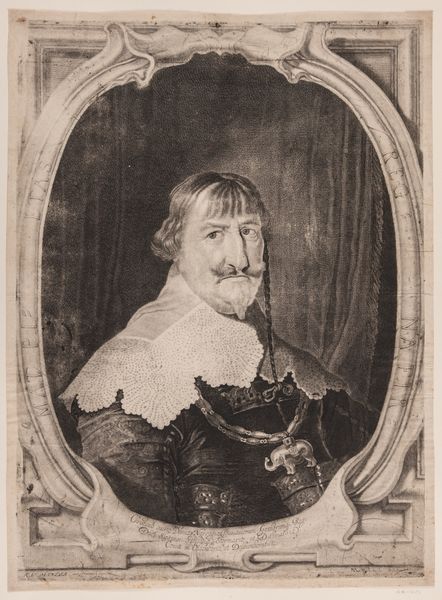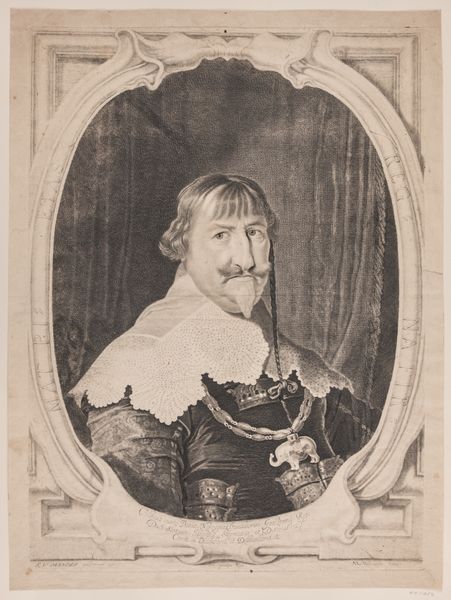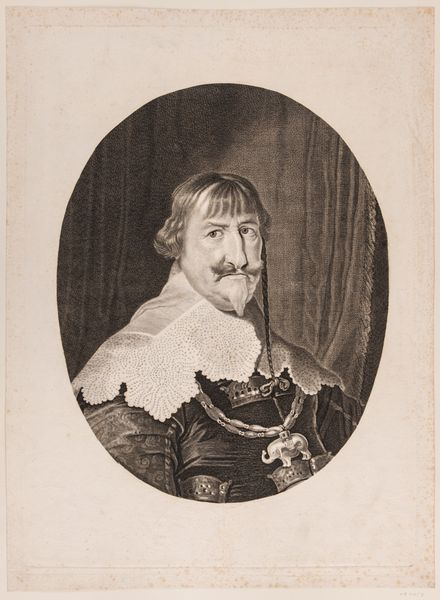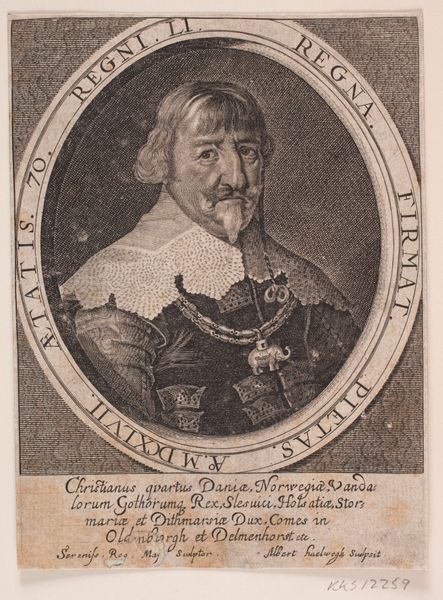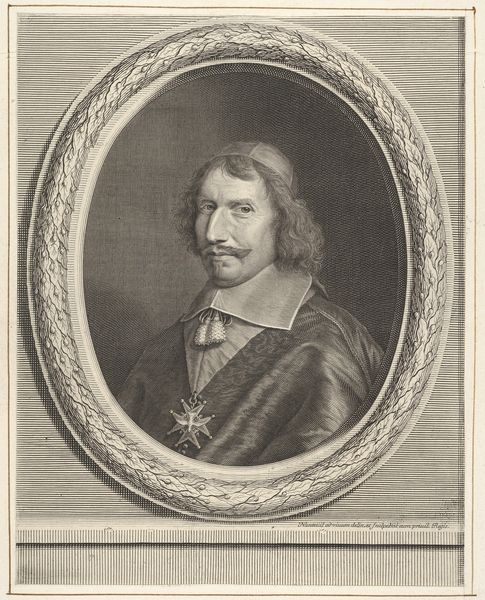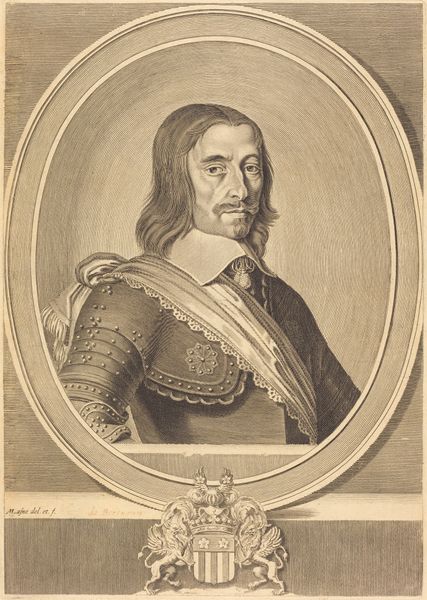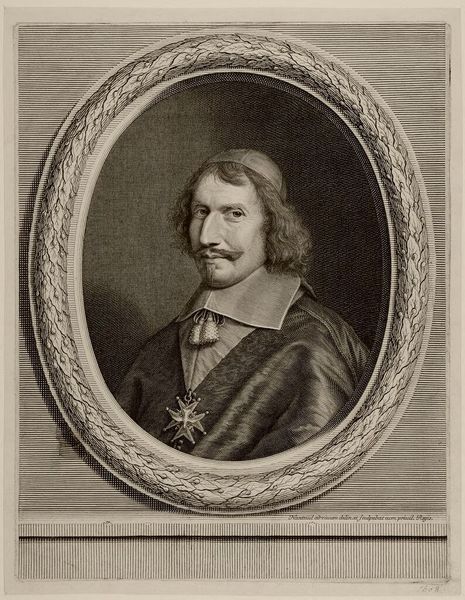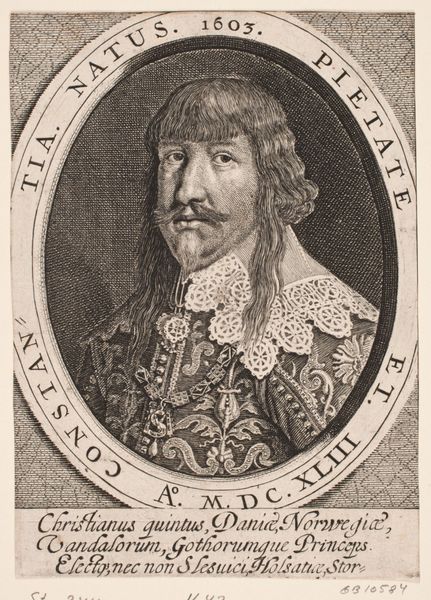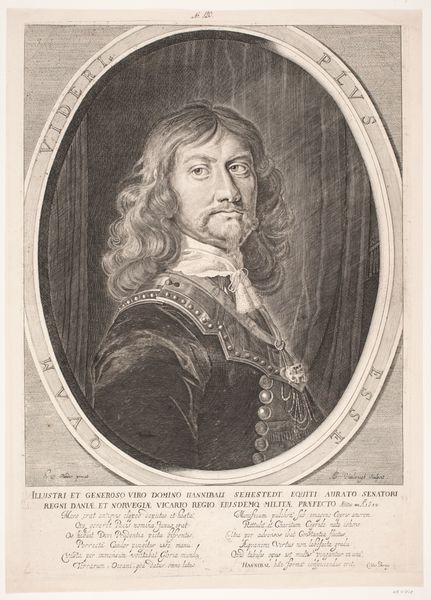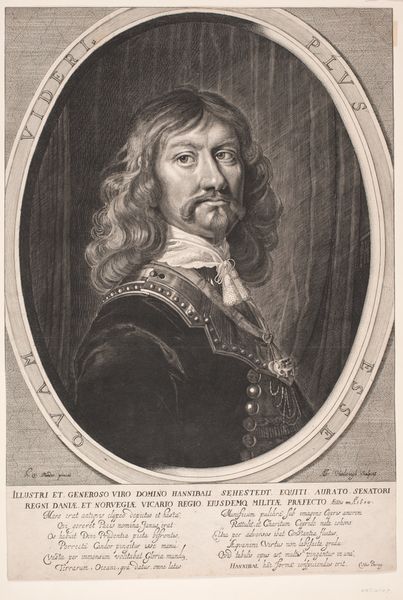
print, engraving
portrait
baroque
portrait reference
portrait drawing
northern-renaissance
engraving
Dimensions: 574 mm (height) x 414 mm (width) (bladmaal), 558 mm (height) x 406 mm (width) (plademaal)
Curator: This is an engraving of Christian IV, dating from around 1643-1646, made by Albert Haelwegh. Editor: He looks a bit... stern, doesn’t he? There's an imposing quality to this piece despite its intimate scale. A sort of melancholic grandeur. Curator: Observe how the artist has utilized engraving techniques to convey texture. Note the intricate details of his lace collar, the rendering of his regal attire, and how line and tone combine to articulate his facial features. Editor: Yes, the texture is astonishing, especially on the lace! The framing device is beautifully rendered, creating a secondary level of observation and commenting, perhaps, on how we see power—always framed, observed. It makes him look almost trapped, even in his majesty. Do you feel that this elephant motif hanging from his necklace stands as a symbol of royalty? Curator: Indeed, the pendant represents the Order of the Elephant. Functioning as a status marker while also working in counterpoint to the softer lines of the composition. Moreover, its figurative element works effectively alongside the Northern Renaissance aesthetics present. Editor: The man's a walking statement. It’s striking how the rigid detail clashes with the man’s…well, his quite visible weariness. Almost feels like the artist captured not just the king, but the human underneath, burdened by office. This kind of portrayal creates an interesting duality, blurring the line between objective record and subjective interpretation. It raises the question—did the artist intend this contrast? Was it subversion, or just honesty? Curator: What seems compelling is the artwork's subtle interplay of details working to project Christian IV in a particular mode. Haelwegh's control over line, texture, and form allows him to articulate not only the King's status, but possibly aspects of his humanity as well. The engraving thus opens up multiple lines of enquiry. Editor: Makes you wonder what he was thinking during the sitting, doesn't it? Anyway, it’s always amazing how art can encapsulate so much of the human condition. Curator: Precisely, yes, and it provides us with a valuable insight into the visual culture and aesthetic practices during the Baroque era.
Comments
No comments
Be the first to comment and join the conversation on the ultimate creative platform.
